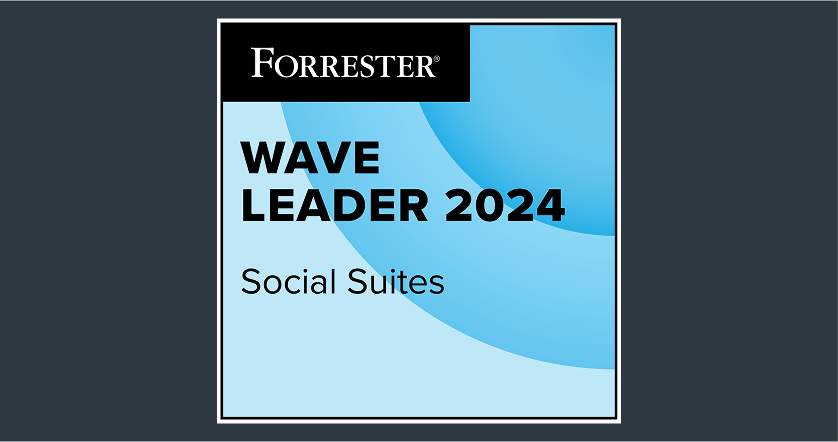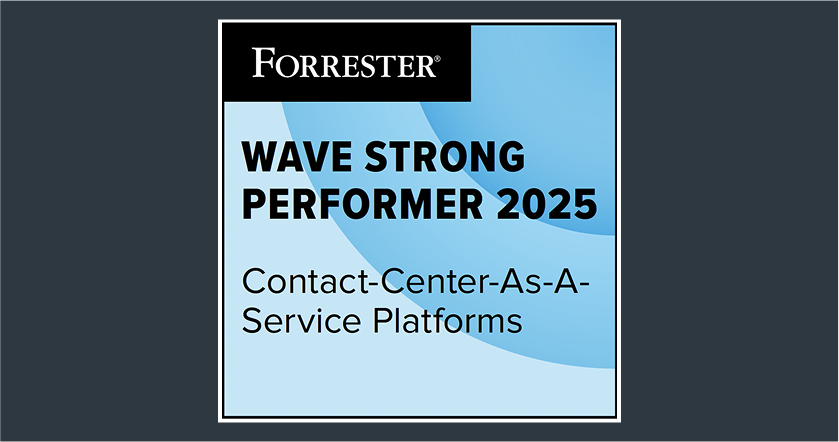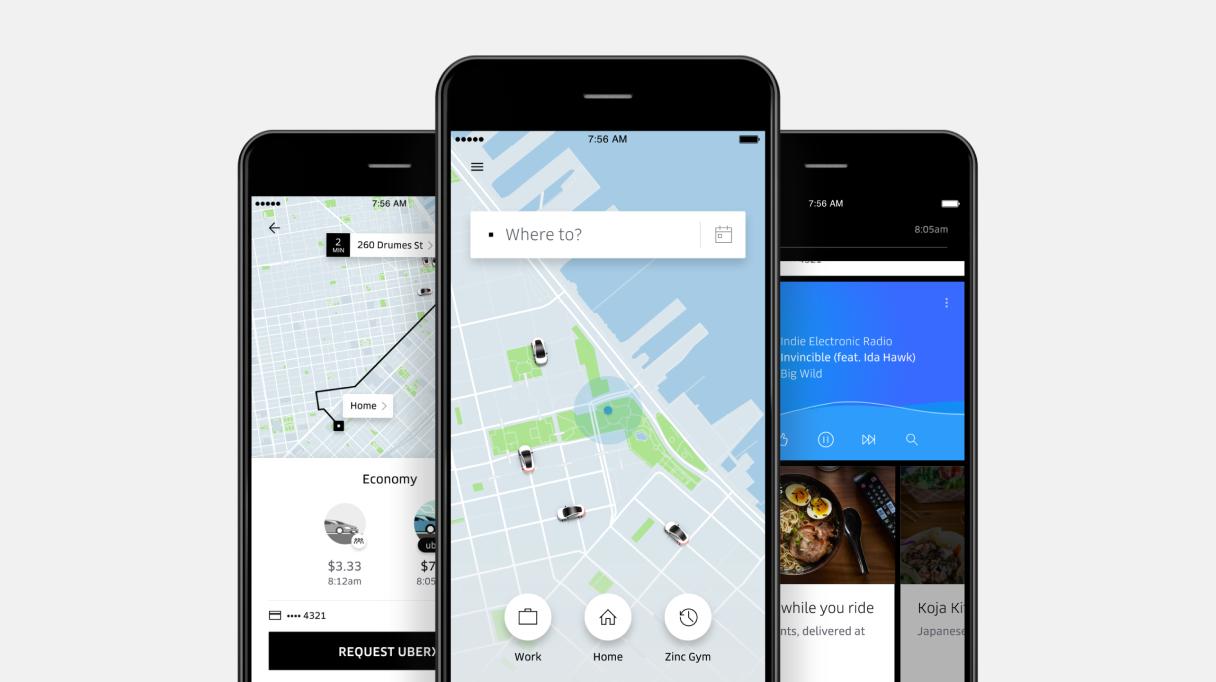What is workforce optimization?
Workforce optimization (WFO) is a strategic approach designed to enhance employee efficiency, productivity and engagement by leveraging technology, data and best practices.
The rise of omnichannel customer service, coupled with customers' higher expectations for swift, personalized interactions, has made workforce optimization increasingly complex. Traditionally, businesses would rely on basic scheduling and forecasting tools, but those approaches are insufficient in today's fast-paced environment.
Today, customer interactions happen across multiple touchpoints — phone, email, live chat, social media — making it difficult to forecast accurately. Also, remote and hybrid workforces are adding layers of complexity to scheduling, performance monitoring and team engagement.
However, it's essential to understand that workforce optimization is not a siloed initiative limited to the customer service department. When done effectively, it creates a ripple effect across the entire organization, driving better outcomes in various areas. Here's how:
Human resources: Workforce optimization tools allow HR teams to monitor performance, training needs and employee satisfaction, which is critical for reducing burnout and turnover. By optimizing the workforce, you can ensure that your employees are engaged, motivated and most importantly, not overburdened, fostering a more empathetic and supportive work environment.
Finance: Efficient workforce planning leads to better labor cost control, reducing overstaffing and unnecessary overtime. This helps the finance department create more accurate budgets and align staffing costs with operational goals.
IT and operations: As workforce optimization relies heavily on advanced software and data analytics, the IT and operations departments play a crucial role in implementing and maintaining the technology stack. Optimizing workforce processes enables better collaboration between IT and operations, ensuring smooth integrations, data flow and continuous improvement.
Key components of workforce optimization
Workforce optimization (WFO) is about maximizing your team's effectiveness and ensuring your team operates at peak efficiency. Here are four key components that drive peak performance:
📋 Workforce planning
It is the strategic process of analyzing and preparing staffing needs to align employee capabilities with organizational goals. It ensures the right balance of team members with the necessary skills is in place when and where needed. Effective planning helps avoid the costly pitfalls of overstaffing or understaffing, ensuring smooth operations and resource optimization.
📅 Scheduling
Scheduling is more than just assigning shifts — it’s about intelligently allocating tasks and employees based on availability, skills and anticipated demand. This approach guarantees optimal coverage during peak times while minimizing downtime during slower periods. In call centers, effective scheduling also prevents agent burnout by balancing workloads and increasing job satisfaction and retention.
📊 Performance management
Performance management is critical for monitoring and improving employee effectiveness. By tracking key metrics, you can identify high performers and detect areas for improvement. Regular feedback, coaching and recognition are integral to performance management, aligning individual contributions with organizational objectives. This component not only boosts morale but also encourages a culture of continuous improvement.
📚 Training and development
A strong focus on training and development ensures that employees have the skills and knowledge needed to adapt and grow. Continuous learning opportunities keep the workforce competitive and engaged while clear career development pathways foster job satisfaction and long-term retention. By investing in training, companies improve employee performance and build a more resilient and future-ready team.
WFO vs WEM vs WFM
Understanding the distinctions between workforce optimization (WFO), workforce engagement management (WEM) and workforce management (WFM) is crucial for maximizing your team's potential. Let's examine each approach:
Aspect | Workforce Optimization (WFO) | Workforce Engagement Management (WEM) | Workforce Management (WFM) |
Focus | Enhancing efficiency and productivity | Improving employee engagement and satisfaction | Managing and scheduling the workforce |
Key components | Planning, scheduling, performance management, training and development | Employee feedback, engagement strategies, wellness programs | Scheduling, forecasting, time and attendance tracking |
Primary goal | Operational efficiency and high performance | Boosting morale, motivation and retention | Ensuring adequate staffing and efficient use of labor |
Tools used | Analytics, performance management systems, training platforms | Engagement surveys, feedback platforms, recognition tools | Scheduling software, attendance tracking, forecasting tools |
Impact areas | Operations, customer service, HR, sales and marketing | Employee satisfaction, retention, productivity | Shift coverage, labor costs, compliance with labor laws |
Example | Using data analytics to optimize staff allocation | Implementing an employee recognition program to raise motivation | Automated shift scheduling for proper staffing |
4 Benefits of workforce optimization
Workforce optimization (WFO) offers several transformative advantages for your business. Strategically managing your workforce can significantly enhance productivity, reduce costs and boost employee morale. Let’s explore some of the benefits of effective WFO:
⚙️Increased operational efficiency
WFO ensures that tasks are aligned with employees’ strengths and availability, which leads to smoother operations and increased productivity. For example, in customer service, cross-training employees allows for flexibility during peak times, reducing customer wait times and improving service levels.
This approach also ensures that staffing levels are adjusted dynamically to meet demand. In fact, 58.2% of businesses saw an improvement in agent performance because of WFO’s impact.
💸 Reduced costs
Optimizing workforce scheduling and task management can significantly reduce operational expenses. Aligning staffing levels with actual demand helps minimize labor costs, reduce overtime and eliminate idle time, ensuring more efficient use of financial resources while avoiding overstaffing or excessive overtime.
😊 Enhanced employee satisfaction
Happy employees are more engaged and productive. WFO considers employees’ preferences, skill sets and work-life balance, fostering a positive work environment. A strong learning culture is a key component of workforce optimization, with LinkedIn reporting that employees at companies that emphasize learning are 25% more likely to be satisfied in their jobs. You can keep employees motivated and committed to long-term success by offering flexible schedules and continuous development opportunities.
🌟 Improved customer service
When your workforce is optimized, the positive impact on customer service is evident. Optimized scheduling and employee performance lead to faster response times and consistently higher-quality customer interactions, ultimately boosting the overall customer service experience.
How to optimize your workforce for business success
Optimizing your workforce is essential for improving efficiency and achieving business goals. Here are some practical strategies for approaching it:
1. Focus on customers
Align your workforce with customer needs to boost service quality. Use customer data and feedback to guide staffing decisions. Analyze peak times, service demands and customer preferences to schedule staff effectively. For instance, if data shows increased customer traffic on weekends, schedule more staff during these peak periods to ensure timely service. This approach enhances customer engagement and improves overall customer satisfaction.
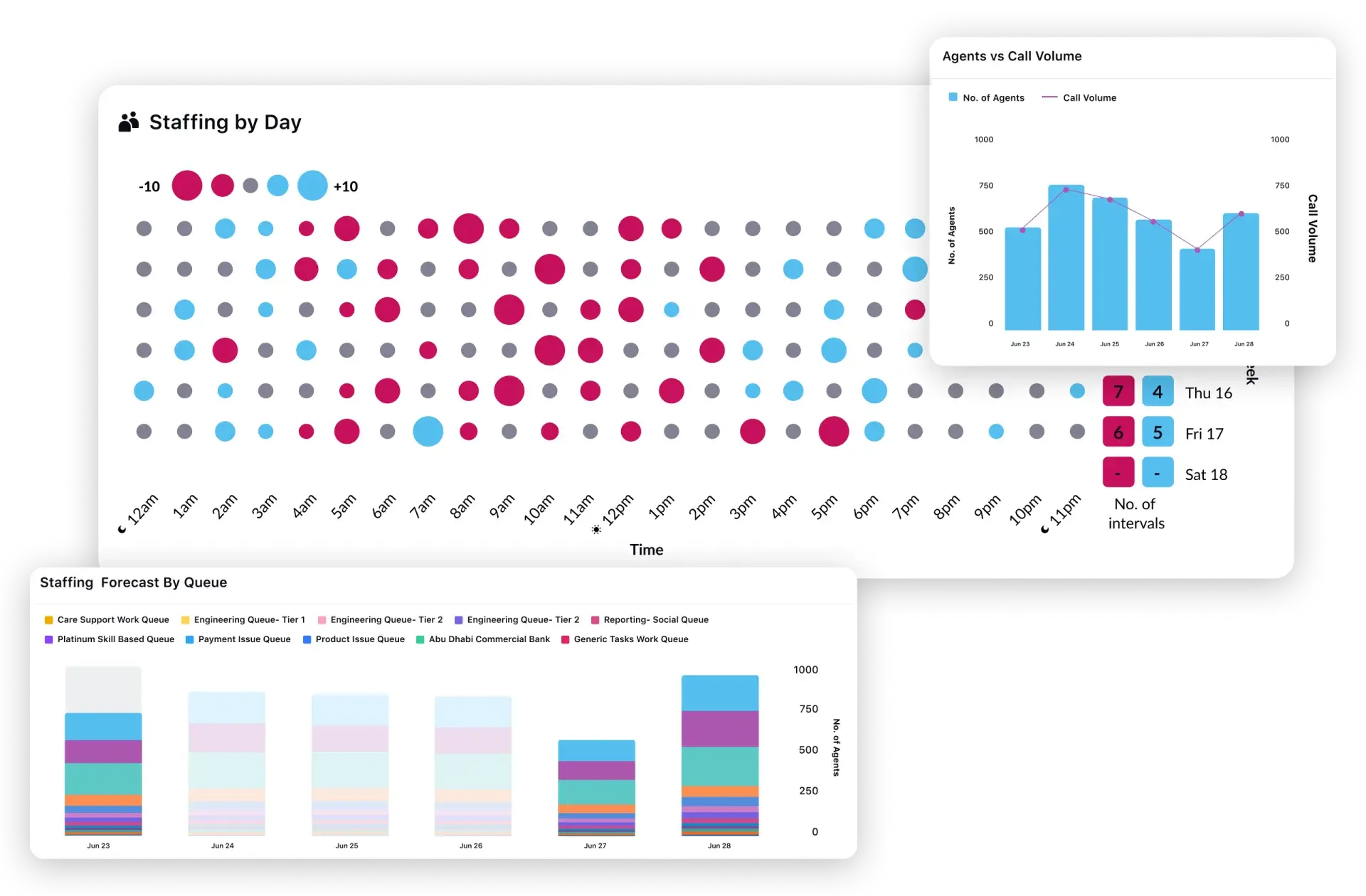
🔍 Deep Dive: Customer Focus: A Detailed Guide (Examples + Tips)
2. Ensure proper employee onboarding (and training)
A robust onboarding process is critical for the long-term success of workforce optimization. Properly onboarding employees sets clear expectations from the outset, establishes performance benchmarks and equips them with the necessary skills to excel in their roles.
Start by providing comprehensive training on your technology stack and workflows. This ensures that new hires are not only familiar with the tools they will be using but also understand the processes that drive customer service excellence.
Additionally, instilling a sense of purpose during onboarding helps employees recognize that workforce optimization decisions are made with customer needs and employee capabilities in mind. Emphasizing that these decisions are never at the expense of agent well-being fosters a supportive environment where employees feel valued and engaged.
💡 Pro Tip
Implement a structured onboarding checklist that includes key milestones for new hires, such as shadowing experienced agents, completing technology training modules and understanding performance metrics.
Schedule regular one-on-one check-ins during the first month. These sessions, designed to discuss challenges, answer questions and provide constructive feedback, play a crucial role in fostering a sense of community and support within the team.
For example, after their first week, have them participate in a debrief session where they can share their experiences and receive guidance on handling common business scenarios. This approach not only accelerates their learning curve but also strengthens the team bond.
3. Utilize existing information
Utilize data from your HR systems, performance reviews and historical sales figures to make informed decisions. This will help you identify trends and optimize staffing and scheduling. For instance, if performance reviews reveal that certain employees excel in specific tasks, assign them roles that capitalize on their strengths. Refrain from relying on outdated or incomplete data to ensure your workforce is managed efficiently.
💡 Pro Tip
Integration is key! Ensure your HR, sales and performance management systems are seamlessly connected. Integrating data sources across departments allows for more accurate insights and smarter staffing decisions, helping you better anticipate needs and adjust in real-time.
4. Leverage AI-led forecasting
AI-led forecasting is a powerful way to optimize your workforce by accurately predicting staffing needs. By analyzing historical data, real-time customer interactions and market trends, AI allows businesses to anticipate demand fluctuations and respond accordingly. This ensures you have the right number of employees during peak times and prevents overstaffing during quieter periods.
The strength of AI lies in its proactive nature, always one step ahead. For example, AI-powered forecasting tools can identify patterns in customer behavior — whether it's seasonal fluctuations or daily call volumes — allowing you to dynamically adjust shifts, manage resources more effectively and avoid operational bottlenecks. This proactive approach boosts efficiency, reduces labor costs and improves customer service by ensuring timely and appropriate staffing, making you feel secure and prepared for any situation.
😊 Good to know
Modern workforce management software takes forecasting to the next level by predicting future case volumes, handling times and SLAs across all channels with unparalleled accuracy based on historical data. With added flexibility, it allows you to adjust schedules easily and reduces supervisor workloads by automating shift planning for all locations.
Additionally, bulk edits, shift swapping and bidding empower teams to manage schedules effectively, driving operational efficiency and employee satisfaction.
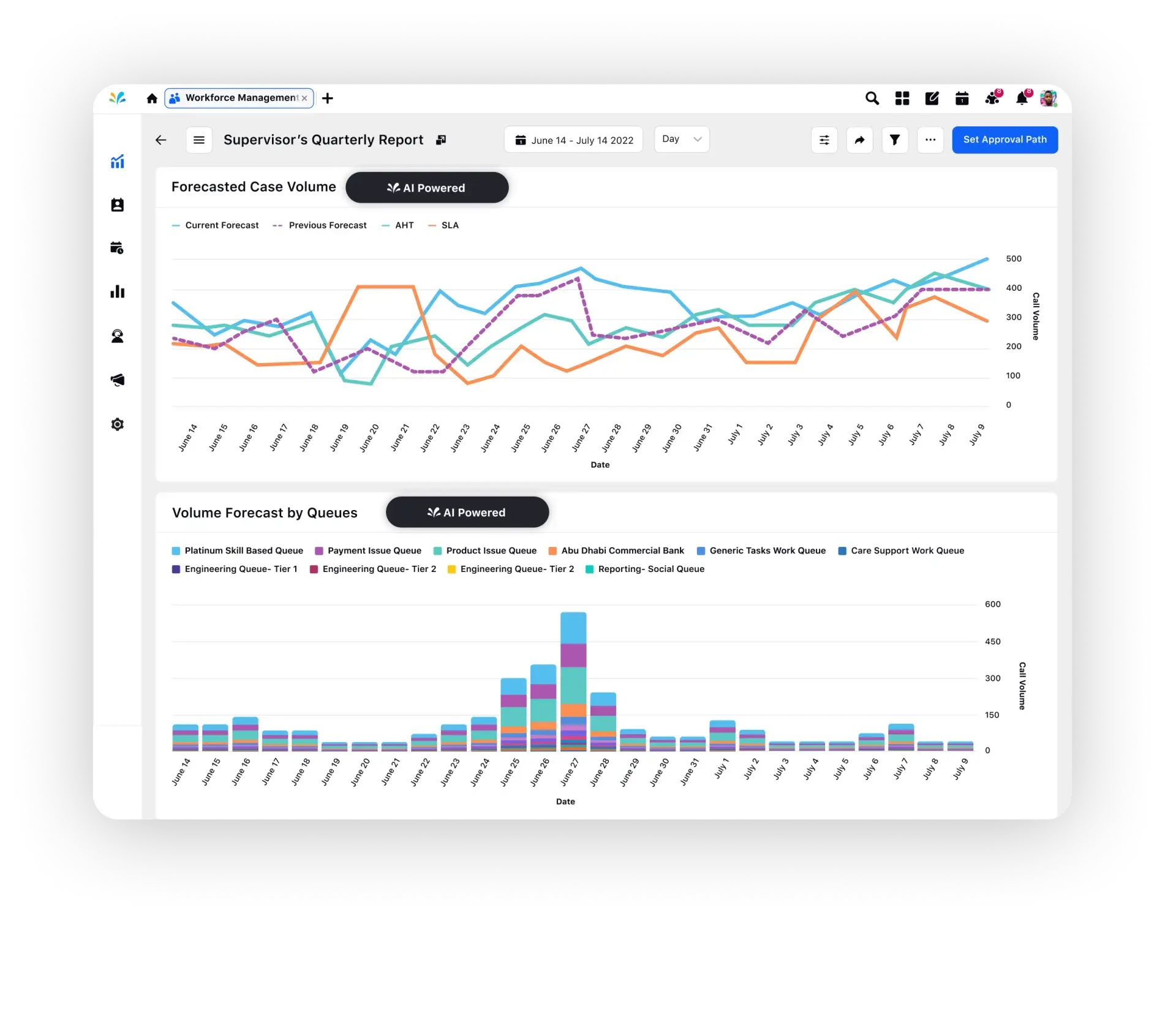
5. Monitor agent adherence in real-time
Real-time agent adherence monitoring is vital for maintaining service quality and operational efficiency. You can quickly identify and address any deviations that may affect performance by tracking whether agents are following their scheduled shifts and adhering to established protocols.
For instance, if an agent frequently logs in late or takes extended breaks, it can increase customer wait times and strain other team members. Real-time adherence monitoring allows managers to intervene proactively, providing support or adjusting schedules to maintain optimal coverage.
This practice ensures that service levels are consistently met and fosters accountability among team members. When agents know they are being monitored, they are more likely to adhere to their schedules, enhancing overall productivity.
💰 Two cents from Sprinklr
While workforce optimization focuses on efficiency and cost-effectiveness, quality assurance must remain a priority. Balancing both is key to delivering consistent, high-quality service, even with leaner teams or automated systems. Quality management should work in tandem with workforce management to ensure that customer experiences are never compromised.
How modern quality management software helps
Modern quality management software leverages AI to monitor and evaluate customer interactions across all channels. AI tools can review conversations in real-time, identifying deviations from service guidelines, compliance breaches, or potential areas for improvement. For example, AI can automatically flag calls that stray from compliance protocols or conversations where customer sentiment indicates dissatisfaction. This allows supervisors to step in quickly and provide targeted coaching or corrective actions.
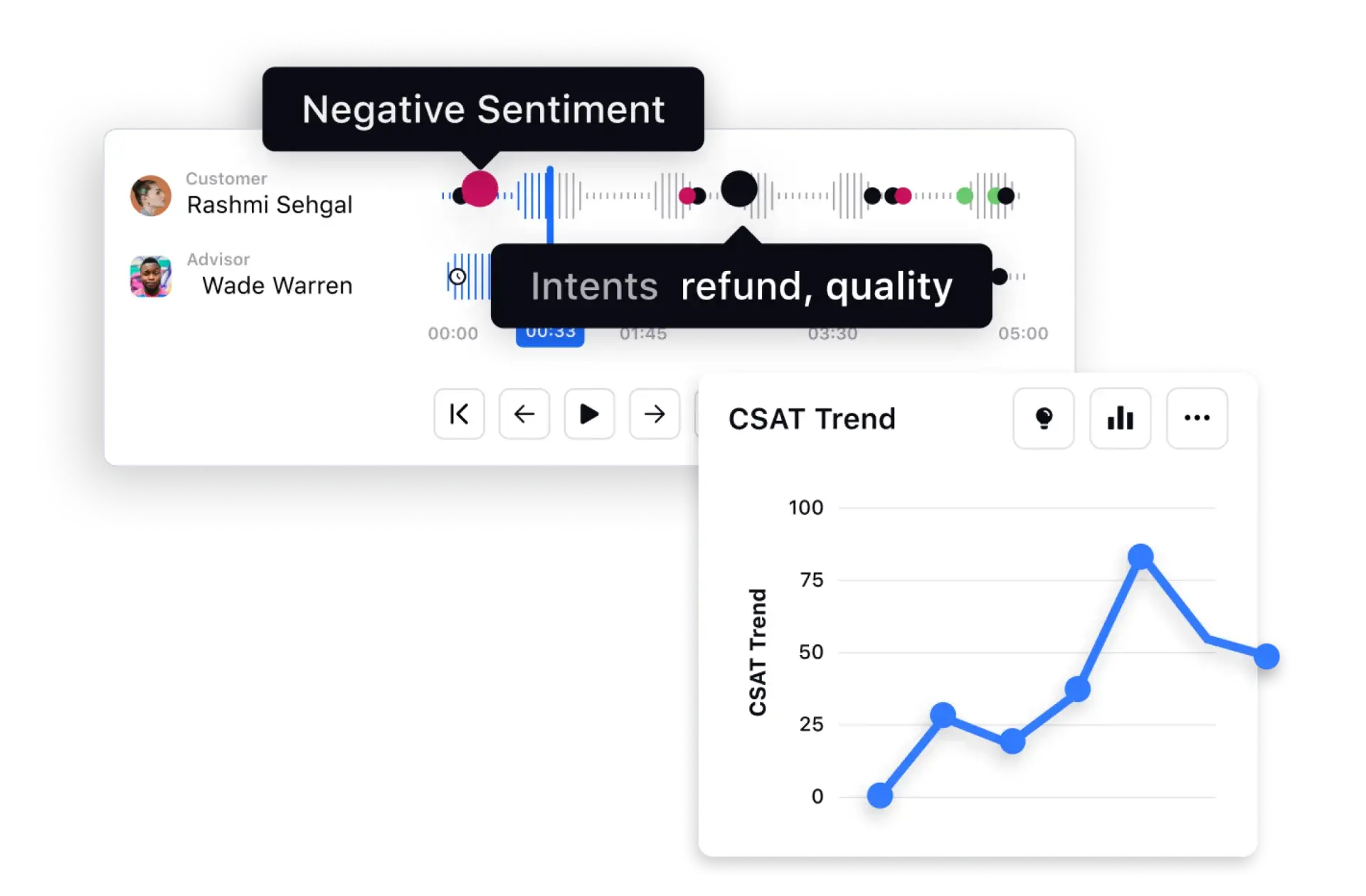
6. Track trends and metrics continuously
With advanced contact center analytics, you can monitor agent performance, workload distribution and customer service metrics in real-time. This capability allows managers to make immediate adjustments — such as reallocating staff during unexpected demand spikes or supporting overburdened teams — ensuring that operational efficiency remains high.
Continuous monitoring also helps identify performance trends requiring urgent attention, such as productivity dips or prolonged handling times. By staying on top of these metrics, you can maintain optimal efficiency and customer satisfaction, while advanced tools are crucial in fostering a balanced and engaged workforce.
How Sprinklr helps
As omnichannel customer service becomes necessary, Sprinklr’s reporting and analytics software provides supervisors with complete visibility into customer cases. It analyzes key insights, including channels used, customer sentiment and agent behavior, guiding decisions on self-learning, coaching and call center engagement strategies. Your supervisors can track their overall team metrics while swiftly identifying trends and root causes of performance anomalies.
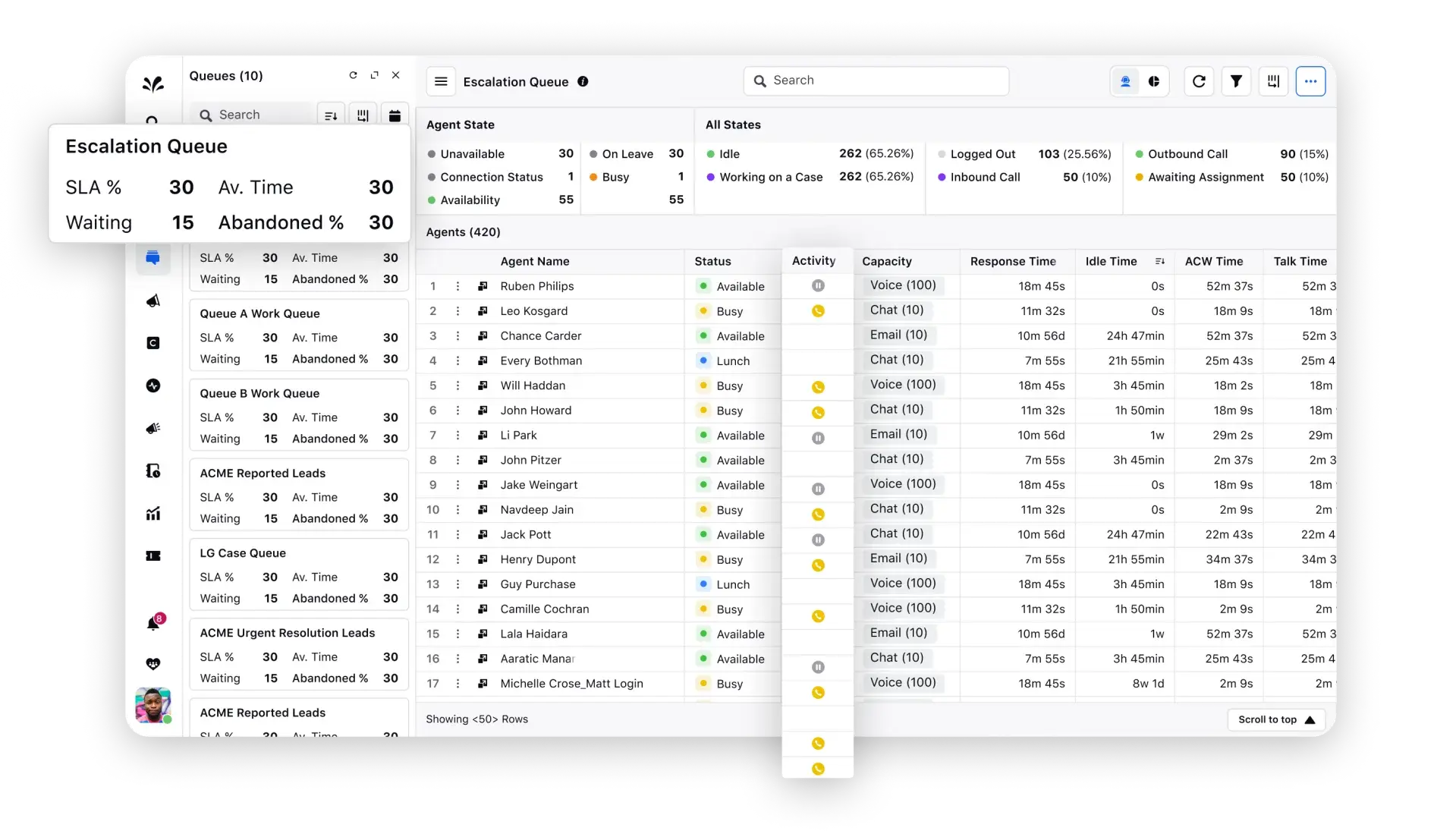
When to migrate from WFO to WFM solution
As your organization grows and evolves, there comes a time when you need to upgrade from a workforce optimization solution to a more comprehensive workforce management (WFM) alternative. But how do you know when to make the switch? Let’s dive into the details:
A. Recognize the need for migration
Switching from WFO to WFM typically arises when you require more advanced capabilities. Key indicators that it’s time to transition include:
Increased complexity: If your current workforce optimization tools struggle to manage the complexities of scheduling, forecasting and performance tracking as your team expands, it’s a clear signal to upgrade.
Scalability issues: When your system can’t accommodate additional staff or operational demands, it may hinder your growth.
Integration needs: A WFM solution may be necessary if you require seamless connections with other business systems for improved data flow and analysis.
Need for advanced Insights: If your WFO system cannot provide deeper insights and predictive analytics, consider switching.
B. Benefits of migrating to a WFM solution
Transitioning to a WFM solution offers several transformative advantages:
Improved efficiency
WFM solutions automate and simplify scheduling, forecasting and reporting, significantly reducing errors and saving time. This automation provides a sense of relief from manual tasks, allowing managers to focus on strategic activities. For example, a healthcare provider can automate nurse and doctor scheduling, ensuring optimal staff coverage at all times.
Enhanced flexibility
WFM solutions facilitate real-time adjustments to staffing levels and schedules, enabling swift responses to unexpected workload spikes or shifts in customer demand. For instance, during a flash sale, an online retailer can use its WFM system to adjust warehouse staffing quickly to meet increased order volume.
Improved decision-making
WFM solutions empower managers with advanced analytics, enabling more informed decision-making. These tools provide detailed performance metrics and trend analysis, instilling confidence in managers to make data-driven choices. For instance, a manufacturing company can track production line efficiency and employee performance using WFM analytics, making it feel more in control of its operations.
Increased employee satisfaction
WFM solutions enhance scheduling accuracy and workload management, resulting in happier, more productive employees. They help reduce scheduling conflicts and improve work-life balance. A hospitality business can use WFM to create schedules that align with employee preferences and availability, boosting morale.
C. Steps for migrating to a WFM solution
Migrating to a WFM solution involves several key steps to ensure a smooth transition:
Assessment and planning
Start by assessing your current needs. Evaluate the limitations of your existing system and identify the features required from a new WFM solution. Set clear objectives for what you aim to achieve through the migration, such as improved forecasting or enhanced shift management.
Selecting the right Solution
Explore various options to find a WFM solution that meets your specific needs. Test shortlisted solutions to determine the best fit and consider modern platforms that offer features like advanced omnichannel scheduling, AI-led forecasting and real-time tracking.
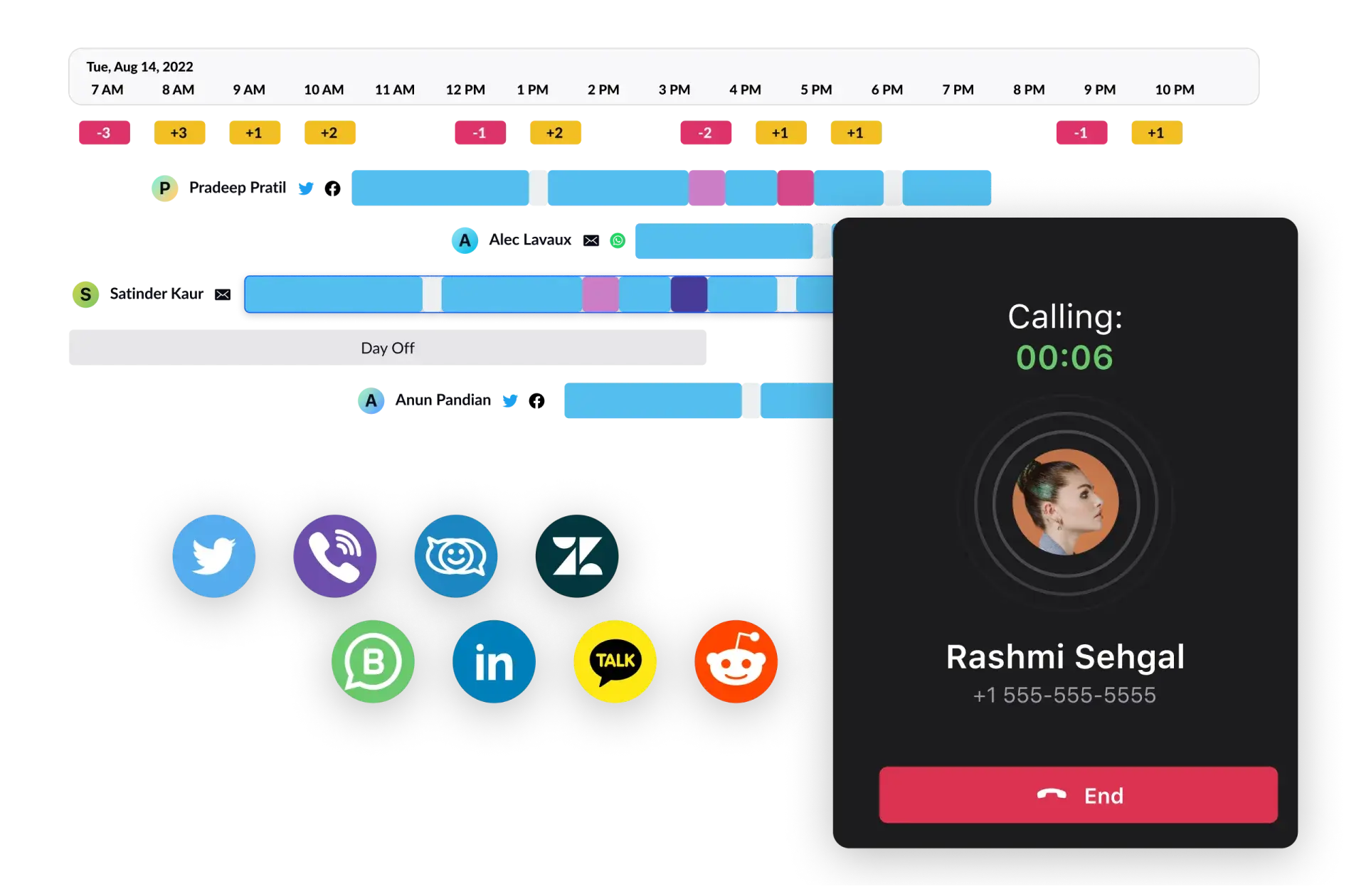
Data migration and integration
Develop a strategy for transferring data from your existing WFO system to the new WFM platform. During this process, ensure accuracy and integrity and set up integrations with other business systems, such as payroll and HR, to facilitate seamless operations.
Training and change management
Training and change management are crucial for successful adoption. Provide comprehensive training to your team, ensuring they feel comfortable with the new system. Clearly communicate the changes and their benefits to encourage staff buy-in.
📌 Editor’s Pick: Change Management Models: A Customer Service Perspective
Implementation and testing
Implement the WFM solution in phases, starting with a pilot group to identify and resolve any issues. Continuously monitor the system’s performance and make adjustments to optimize its effectiveness.
D. Migration challenges and how to overcome them
Migrating to a new workforce management system can present its own challenges. Addressing these is key to ensuring a smooth transition. You may encounter:
Resistance to change
Employees may resist transitioning to a new system. To address this, involve them early in the process. Communicate the benefits of the new WFM system and offer thorough training and support to ease the transition.
Data migration issues
Moving data from your old system to the new WFM platform can be tricky. To ensure a smooth migration, back up all data and use reliable tools to maintain data accuracy and integrity.
Integration complexities
Integrating the new WFM system with your existing systems can be complex. Collaborate closely with your IT team and the WFM provider to overcome this hurdle and ensure a seamless integration process.
Cost concerns
Your organization might be concerned about the upfront cost of installing a new WFM system. To demonstrate the return on investment, emphasize the long-term benefits, such as increased efficiency, reduced labor costs and improved compliance.
As organizations grapple with the complexities of scaling, optimizing their workforce and meeting customer demands, the challenges posed by outdated systems become glaringly apparent. Without the right tools, you risk falling behind and facing inefficiencies, disengaged employees and dissatisfied customers.
That’s why Sprinklr’s workforce management software integrates advanced scheduling, AI-led forecasting and real-time analytics in a unified platform. This empowers you to make informed decisions that enhance operational efficiency and employee satisfaction.
Your success hinges on having the right people in the right place at the right time and Sprinklr makes this effortless. Schedule a demo now to see AI-powered workforce management in action.
related products
Thank you for contacting us.
A Sprinklr representative will be in touch with you shortly.
Contact us today, and we'll create a customized proposal that addresses your unique business needs.
Request a Demo
Welcome Back,
No need to fill out any forms — you're all set.
